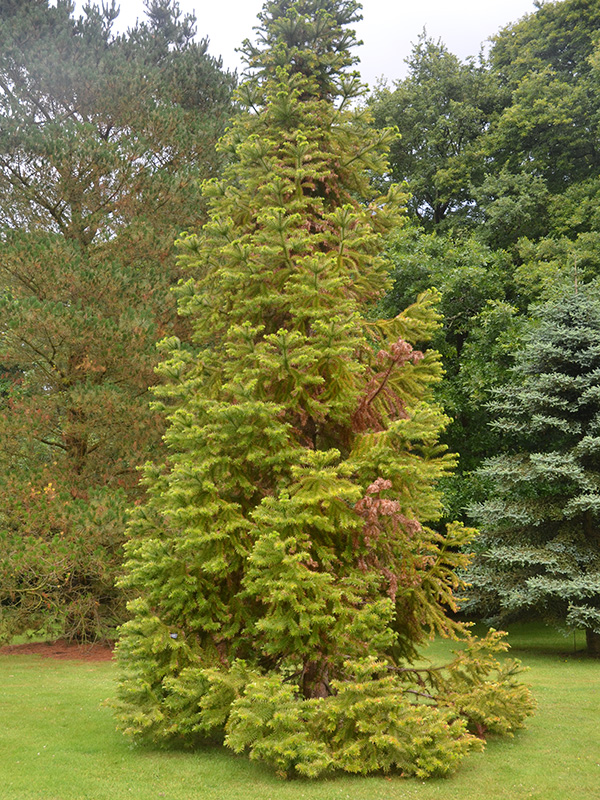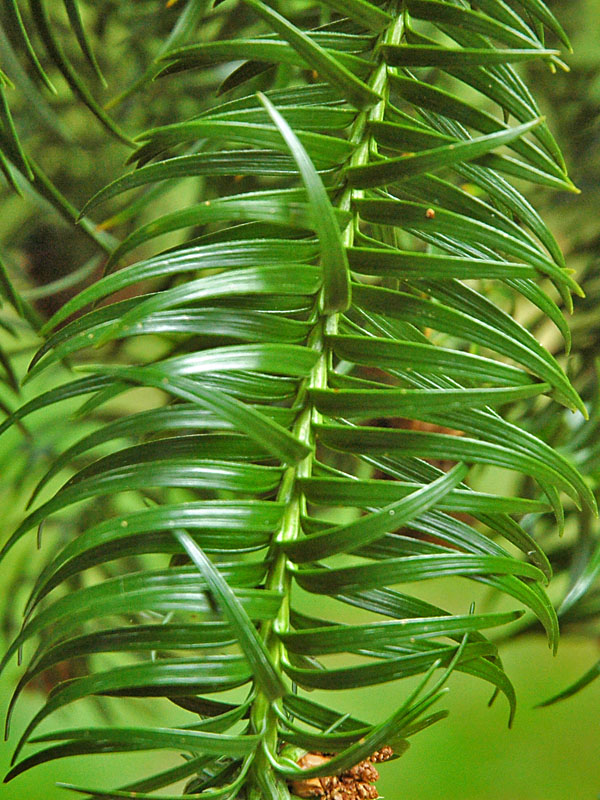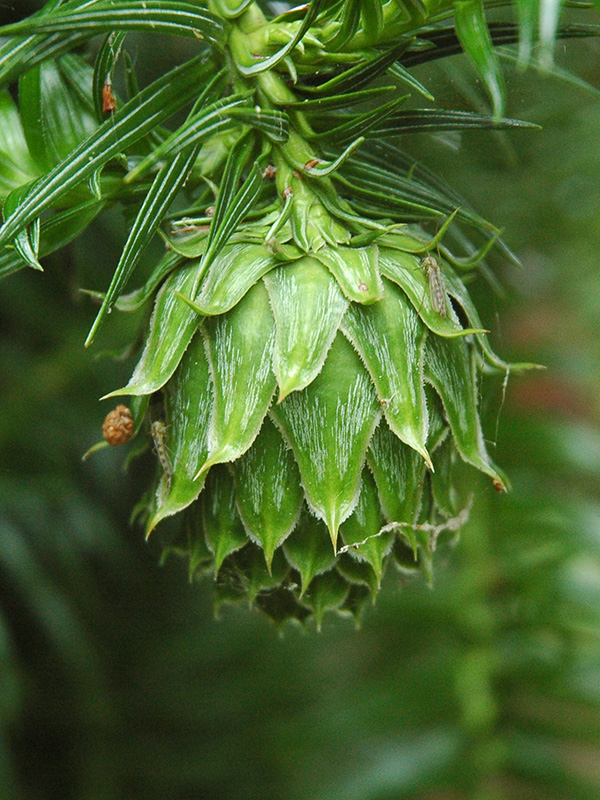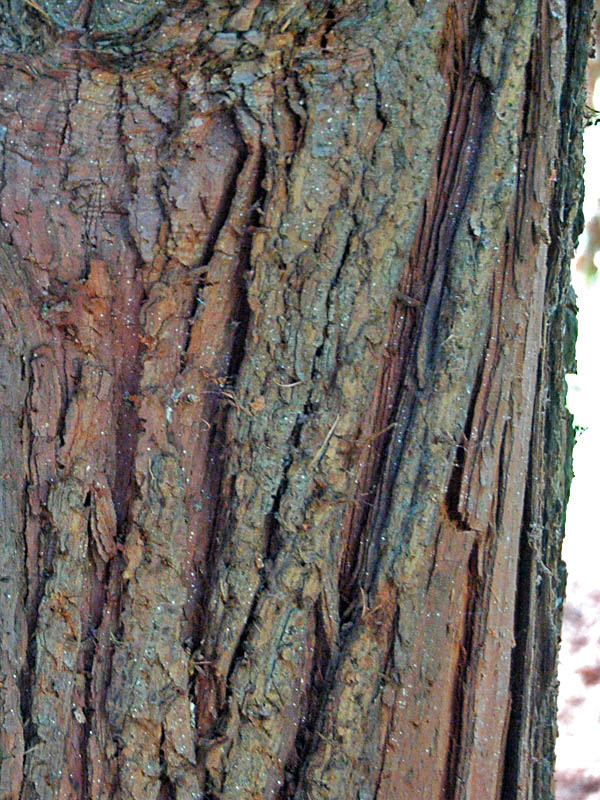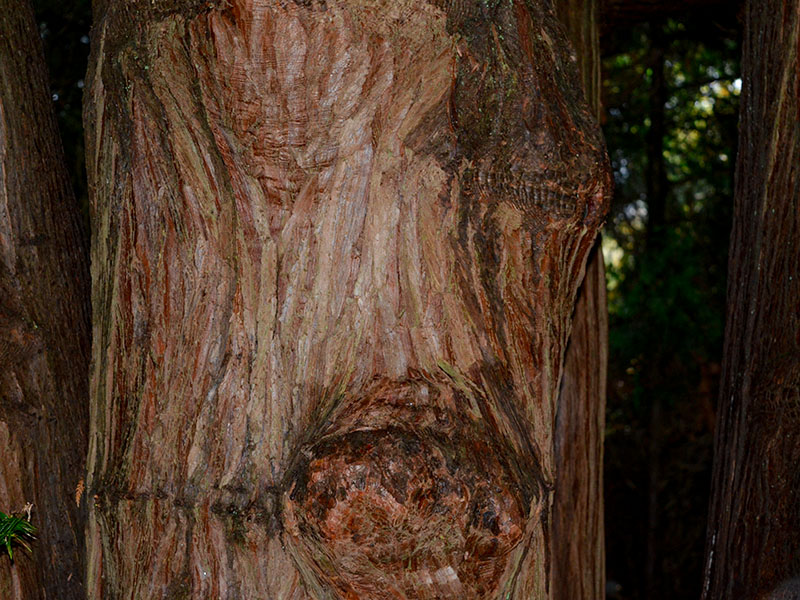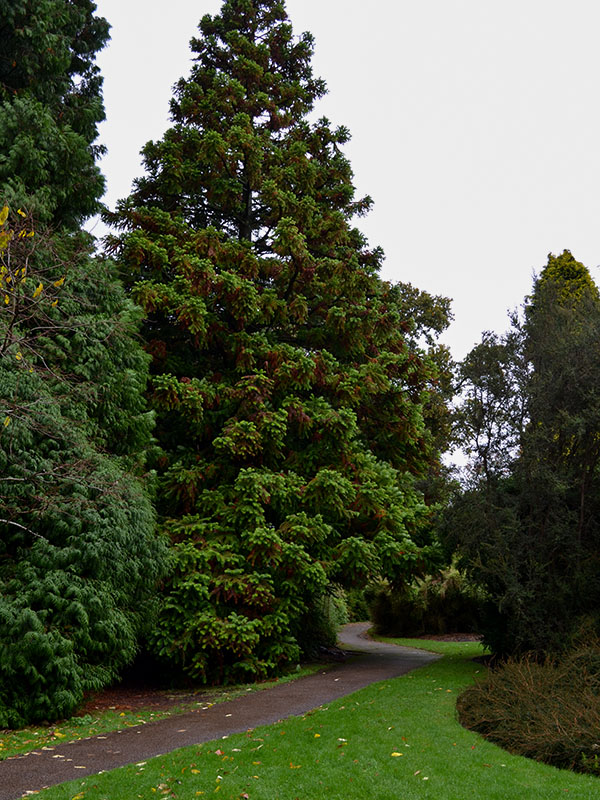
Tropicals, Woody > Cunninghamia > Cunninghamia lanceolata > Cunninghamia lanceolata
Cunninghamia lanceolata
Chinese Fir
Origin: China, Vietnam and Taiwan.
Mike's
Opinion


"
This large tree can add "bulk" to a new landscape and provide a handsome background for flowering trees and shrubs. Unfortunately, if the climate reaches -25°C, needles on the tips of the branches die and fall off, eventually growing back however, it can produce a ragged looking tree throughout the winter months.
Michael Pascoe, NDP., ODH., CLT., MSc. (Plant Conservation)
"
| Family |
| Taxodiaceae |
| Genus |
| Cunninghamia |
| Species |
| lanceolata |
| Category |
| Tropicals, Woody |
| Type |
| Tree (evergreen) |
| Pronunciation |
| USDA Hardiness Zone |
| 6 - 9 |
| Canadian Hardiness Zone |
| 7 - 8a |
| RHS Hardiness Zone |
| H4 - H5 |
| Temperature (°C) |
| (-23) - (-4) |
| Temperature (°F) |
| (-10) - 25 |
| Height |
| 40-45 m |
| Spread |
| 3-10 m |
Photographs
Description and Growing Information
Flowering Period
| General Description |
| The Chinese Fir is a large evergreen reaching upwards of 45 m. The medium green leaves are spirally arranged and have a slight curl. As the tree matures, the branches begin to thin out but with its weeping branches it maintains its dense appearance. |
| Cultivation |
| Prefers neutral to acidic pH, and moist, well-drained loamy or sandy soils. |
| Shape |
| Pyramidal with pendulous branching. |
| Growth |
| Slow |
| ID Characteristic |
| This is a large tree with weeping branches. A lush green all year, occasionally loosing leaves with colder weather. |
| Bark/Stem Description |
| The bark is a grey-brown with irregular strips which peel off exposing the red inner bark. A medium texture, not smooth nor rough. The heartwood is quite decay resistant, making it excellent for lumber. |
| Flower/Leaf Bud Description |
| Honey comb look, with over lapping scales, quite small, 0.5-1 cm and a light brown colour. |
| Leaf Description |
| The leaves are 2.5-7 cm long and are quite thin, only 2-4 mm. Bright green and often have a glaucous tinge. In colder weather they can turn a brown/green and fall off. The leaves on the underside of the branch have a slight turn upwards giving the illusion that they spiral. |
| Flower Description |
| Chinese Fir is monoecious, producing both male and female flowers on the same tree. The male flowers are in terminal clusters; female flowers are terminal. |
| Fruit Description |
| 2.5-3.5 cm wide globose shape, the cones are in groups, rarely isolated, starting off green then turning a light brown. |
| Colour Description |
| The tree maintains the bright/medium green leaves all year round. The bark is a lighter brown, almost grey. |
| Texture Description |
| Fine to medium texture. |
| Notable Specimens |
| Secrest Arboretum, Wooster, Ohio, United States of America. Westonbirt, The National Arboretum, Tetbury, Gloucestershire, England. Pinetum Park and Pine Lodge Gardens, Cornwall, England. National Trust Trelissick Garden, Feock, near Truro, Cornwall, United Kingdom. Wakehurst Place, Ardingly, Haywards Heath, Sussex, England. |
| Propagation |
| Take a cuttings that are roughly 15-30 cm long. Rooting in November with a hormone treatment above 8,000 ppm is recommended. Cuttings generally retain the growth characteristics of the branch from which they came from (called topophysis). If taken from a wide branch, likely to form more widespread however, if taken from a top branch the cutting will likely grow more pyramidal. |
References
Hooker, Lambert, and . "Decay resistance of China-fir (Cunninghamia lanceolata). 56". Madison: Forest Products Society, 2006. 29-30. Print.
Wang, Zhan. "Proteomic Analysis of Seed Development in Chinese Fir (Cunninghamia lanceolata)". Russia: Pleiades Publishing, Ltd, 2010. 1-2. Print
